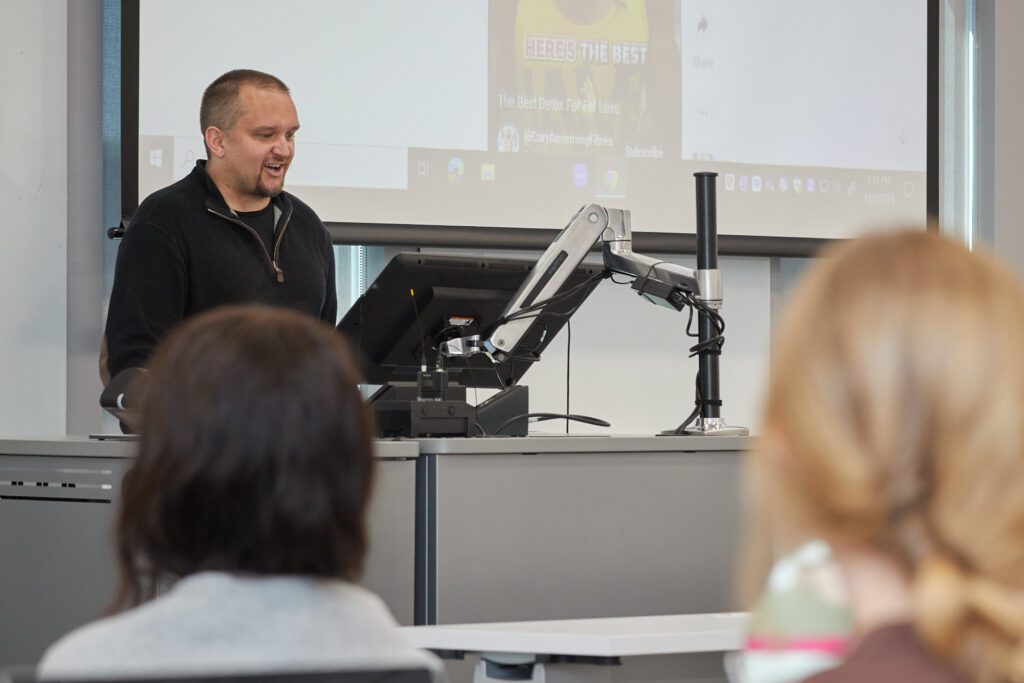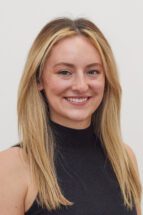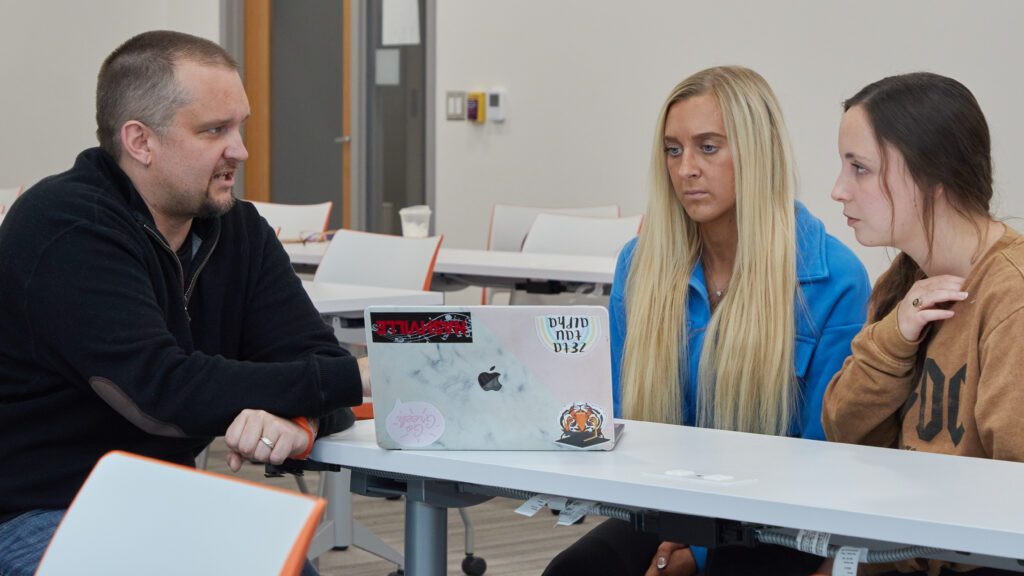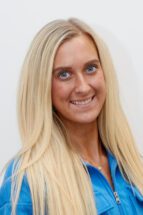Today’s social media platforms are saturated with health hacks and wellness products — from sea moss smoothies and dry scooping protein powder to using lemon juice to cure heartworms in dogs and castor oil compresses to break up tumors.
The claims of wonder drugs, “alternative care” options and easy cures have people investing their time and money into products and solutions that often are based on misinformation, are supported by research that is later disproven or have no scientific basis at all.
This phenomenon is the main focus of a Creative Inquiry (CI) project led by Elliot Ennis, a senior lecturer in the Department of Chemistry at Clemson University. The goal of “Science and Pseudoscience in Popular Media” is to help students and the general public tell the difference between science and pseudoscience and to be able to evaluate health claims seen on social media sites such as Facebook, TikTok and YouTube.

Passion project
Ennis got the idea for his CI project after he encountered a chiropractor who claimed he could “cure” a family member’s scoliosis.
“I went to the literature and looked it up, and no, it’s not right. And then I saw more misinformation, and even more. And next thing I know, it’s been four hours,” Ennis explained. “I thought, ‘We should do a class on this.’”
He created the class six years ago, and it’s been his passion project ever since.
So why do people believe pseudoscience?

“I think there’s a big disconnect between scientists and people who aren’t scientists,” explains Kate McAllister, a biochemistry major taking the class.
Brooke Millet, an animal and veterinary science major, said too many people take what they see on social media at face value without doing their own research. “I think people spend a lot of time listening to what TikTok and Instagram tells them and not really looking into it.”
Oftentimes, she said, these “cures,” hacks and “remedies” offer fast results and offer an alternative to seeing a medical professional. For people searching for medical answers, social media makes it easy to believe they have found a solution on their own.
The students are working to end the disconnect between scientists and the general public by making credible information more accessible than misinformation on social media. They want to educate the general public about what is good research and what is not, and how to think critically to determine whether science supports the claims.
Student in the CI chose their own project, and their focuses include human and animal health across multiple fields. Some projects include flea and tick prevention for pets, tumors, meat production, food additives, fluoride use, Type 2 diabetes, disordered eating and medical misdiagnosis.

Not scientifically vetted
Jamison Alexander, an animal and veterinary sciences major, is researching flea, tick and heartworm prevention for pets. In her research, she found some popular media posts touting lemon juice as a substitute for heartworm treatment. The solution, and others like it, seemed to save pet owners a trip to the vet and a bill to pay, but the information behind the hack is not scientifically vetted, she said.

Students in the class come from many different majors, including biochemistry, animal and veterinary sciences, biological sciences and food science. Although their projects are individualized, the class structure still allows for collaboration, said Savannah Young, a pre-dental biological sciences major.
“We can all piggy-back off each other because we’re all doing different projects, but they’re kind of the same,” she said. This class allows for interdisciplinary discussion, providing a different learning experience than an ordinary lecture class, she said.
“A lot of the things we’re doing, they don’t really have time to teach in vet school, so it’s been a really positive experience to get early exposure,” says Christianna Hoshko, an animal and veterinary sciences major.
The discoveries these students make don’t stop in the classroom, either. Students present their findings at conferences and share their research on social media. And they spread the knowledge they’ve acquired to friends and family members to hopefully prevent them from falling victim to misinformation.
Get in touch and we will connect you with the author or another expert.
Or email us at news@clemson.edu

